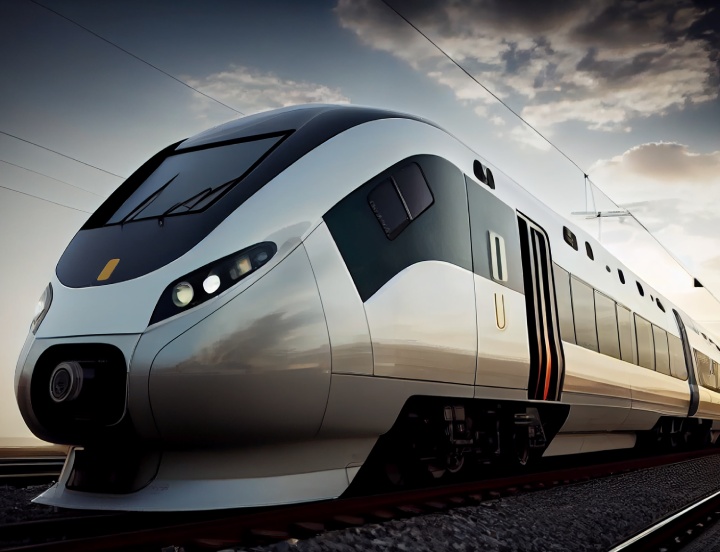Exploring the Remarkable Properties of Stainless Steel
May 27, 2024
Stainless steel is a versatile and widely used material that has transformed various industries, including construction, manufacturing, healthcare, and transportation. Stainless steel’s unique properties make it an ideal candidate for multiple applications. Let’s explore these remarkable properties to understand the impact of the stainless steel industry on today’s world.
The properties of stainless steel determine how this highly versatile alloy behaves under different conditions, allowing engineers, designers, and manufacturers to choose the appropriate grade and shape for specific applications.
The fundamental properties of stainless steel:
1. Corrosion resistance

Stainless steel’s most significant property is its exceptional resistance to corrosion and staining. This property makes it suitable for applications where exposure to moisture, chemicals, or corrosive environments is expected, such as marine environments or chemical processing plants.
2. Strength and durability

Stainless steel exhibits impressive strength, allowing it to withstand heavy loads and high pressures. It offers excellent structural integrity, making it ideal for applications that require reliability and longevity, such as building structures, bridges, and automotive components.
3. High-temperature resistance

Stainless steel can withstand high temperatures without losing its structural integrity. This property suits it for extreme heat applications, such as industrial ovens, exhaust systems, and aerospace components.
4. Aesthetic appeal

Stainless steel’s durability and strength aren’t its only attractive features; it’s a looker, too! Its sleek and modern appearance enhances the visual appeal of products and structures created from the alloy. It adds a touch of elegance and sophistication, making it a popular choice in architecture, interior design, and consumer goods.
Decoding Stainless Steel Properties Across Diverse Applications:
1. Construction and architecture

Stainless steel is widely used in the construction industry for structural components, roofing systems, facades and interior design elements. Its durability, corrosion resistance and visual appeal make it a preferred choice for architects and builders worldwide. The application of stainless steel in construction highlights its significance as a reliable and versatile material, ensuring the longevity and aesthetic appeal of various architectural projects.
2. Manufacturing and engineering

Due to its strength, corrosion resistance, and heat resistance, stainless steel is extensively used in manufacturing processes and engineering applications. It is used to build automotive parts, machinery, tools, and equipment.
3. Healthcare and food industry

Stainless steel is hygienic—it’s easy to clean and resistant to bacterial growth, making it ideal for healthcare equipment, surgical instruments, food processing machinery, and kitchen surfaces. Its properties in the food industry ensure product integrity and hygiene, while its uses in healthcare maintain sterile environments for patient safety.
4. Transportation

While stainless steel finds many uses in the automotive space, it also shines within the aerospace and marine sectors. Due to its strength, corrosion resistance, and lightweight properties, stainless steel is employed in vehicle components, aircraft structures, shipbuilding, and offshore platforms. Stainless steel’s application in transportation extends its versatility across various modes of travel.
The Importance of Understanding Stainless Steel Properties:
Understanding the properties of stainless steel is essential for manufacturing high-quality products with diverse, functional, and practical applications. Engineers and designers must keep the following in mind:
- Selecting the correct grade: Different stainless steel grades offer varying corrosion resistance, strength and temperature resistance. Understanding the specific requirements of an application enables the selection of the most suitable grade to ensure optimal performance and longevity.
- Designing for efficiency: Knowledge of stainless steel’s properties allows for the design of efficient and effective solutions. By leveraging its strength-to-weight ratio, engineers can create lightweight, functional structures without compromising durability, reducing material usage and costs and leading to a sustainable yet economically viable future.
- Ensuring safety and reliability: Understanding stainless steel’s corrosion and temperature resistance reduces the chances of material failure, resulting in safer and more durable structures.
- Enhancing product performance: Visually appealing products always stand out in the market. Stainless steel’s sleek and modern appearance adds value and improves the overall experience for end users, and designers can harness this quality to make products more appealing and easy on the eye.
Stainless steel’s remarkable properties are highly sought-after across industries. Its corrosion resistance, strength, high-temperature resistance and aesthetic appeal offer significant advantages across various sectors such as construction, manufacturing, healthcare and transportation, and the list is growing as its applications become more and more varied. Understanding the properties of stainless steel and specific stainless steel grades in use today helps engineers and designers make informed decisions on grade selection, design efficiency and safety, and drive innovation. This alloy is an exceptionally versatile material, and its diverse uses may change the shape of some industries as we know them today!






